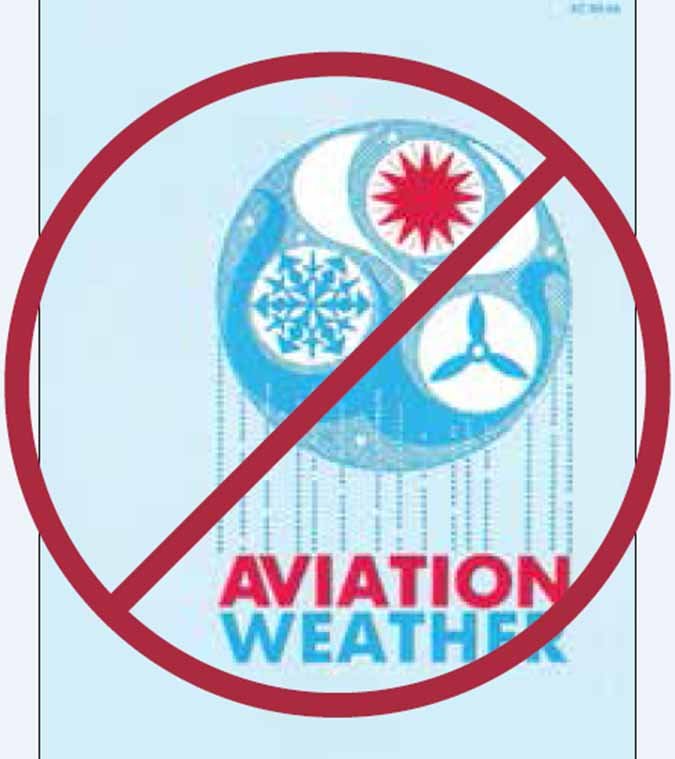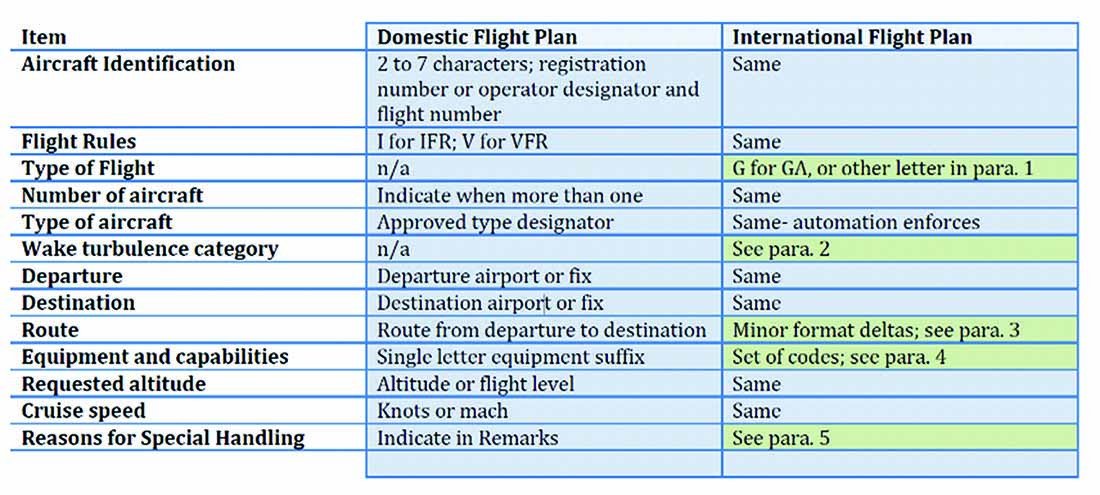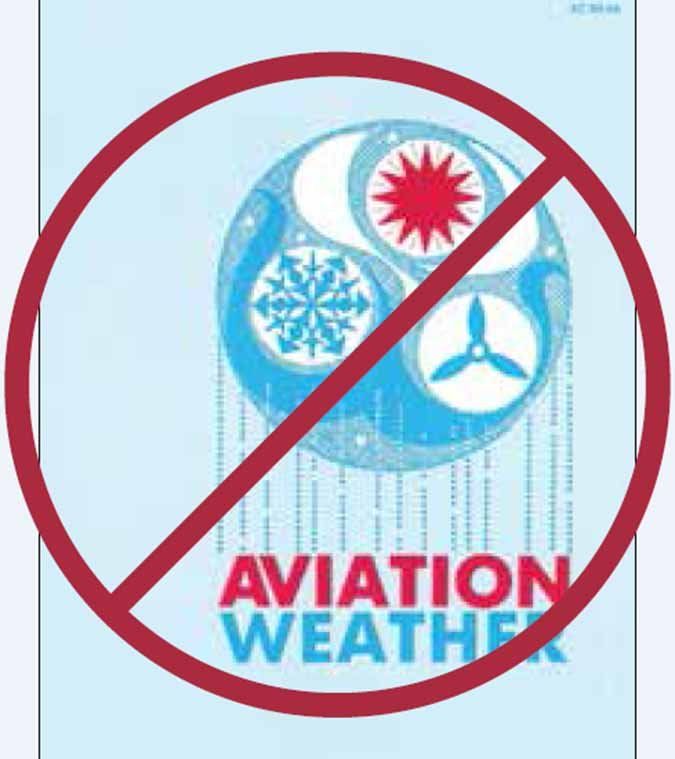The FAA’s Advisory Circular AC 00-6A, Aviation Weather, has long been a staple of pilot bookshelves. The familiar blue volume describing the atmosphere we fly in and the various ways we can obtain information about it literally is required reading for student and advanced pilots alike. But it was last updated in 1975, a couple of generations ago, and needed to be brought into the 21st century. That’s exactly what the FAA is trying to do with the latest edition, announced in August.

According to the new version, AC 00-6B, “The publication began in 1943 as CAA Bulletin No. 25, Meteorology for Pilots, which at the time contained weather knowledge considered essential for most pilots. As aircraft flew farther, faster, and higher, and as meteorological knowledge grew, the bulletin became obsolete. It was revised in 1954 under a new title, The Pilots’ Weather Handbook, and updated again in 1965. In 1975 it was revised under its current title.” But as the new AC also notes, “Previous editions have suffered one common problem—they dealt in part with weather services that continually change, in keeping with current techniques and service demands. As a result, each edition was somewhat outdated almost as soon as it was published, its obsolescence growing throughout the period it remained in print.”
The new AC replaces earlier editions. “New scientific capabilities now necessitate an update to this AC. In 1975, aviation users were not directly touched by radar and satellite weather. In 2016, much of what airmen understand about the current atmosphere comes from these important data sources. This AC is intended to provide basic weather information that all airmen must know. This document is intended to be used as a resource for pilot and dispatcher training programs.”
Companion AC 00-45, Aviation Weather Services, was updated last year and should be considered a supplement to Aviation Weather. Both feature current revisions to their text, plus higher-quality graphics, and are free for the download from the FAA’s web site.

Flight Plan Form Changes
We’ve previously reported on the FAA’s plans to eliminate its very familiar flight plan form with one aligned with the Internal Civila Aviation Organization (ICAO) standards. The ICAO form is and has been required for international flights. Beginning in early 2017, it will be necessary for filing domestic flight plans, too, both IFR and VFR, as well as DVFR and for the Special Flight Rules Area (SFRA) surrounding Washington, D.C. The switchover was to occur earlier this year, then it was to go into effect on October 1. Both dates slipped and, according to AOPA, the new effective date will be in late January, with a 30-day transition period for the flight plans mandatory for operations within the SFRA.
Some of the differences between the two formats are presented in the graphic above, from AOPA. Additionally, according to the association, the FAA has published what it calls an informal guidance document highlighting changes. Other differences between the two flight plan forms, according to AOPA, include:
• DVFR can be indicated by inserting “D” in Type of Flight (Field 8b).
• Departure/Destination can be any legal fix identifier (not just a four-letter airport). Note that this will permit SFRA flight plans to follow the same general approach as is used today.
• Simplified instructions omit ICAO items in Equipment and Other Information that are not necessary for operations in the National Airspace System.
Examples of equipment codes appearing on the international flight plan form, again according to AOPA, include:
• Basic VFR trainer (No GPS/Approach capability), just a VHF radio and a Mode C transponder: V/C (line 10).
• Basic VFR/IFR trainer, with mode C, 978 Automatic Dependent Surveillance-Broadcast Out (ADS-B Out), en route GPS only: SGR/CU1 (line 10); PBN/B2 CODE/XXXXXX SUR/282B (line 18).
• Same as basic VFR/IFR trainer, but with ADS-B In and Out (1090ES), Mode S transponder, and RNAV capable for en route, terminal and approach, WAAS GPS: SGRBZ/SB2 (line 10); PBN/B2C2D2 CODE/XXXXXX, SUR/260B (line 18).
As AOPA points out, pilots can find the aircraft’s hex code—also known as the “Mode S Address,” “ICAO code” or “24 bit address”— by using the aircraft registry and searching for your aircraft. Yes, it appears the FAA now will want pilots to enter a much longer string of characters to describe the type of aircraft they will be flying, along with how it’s equipped. No, we don’t know how flight schools, fleet operations, their customers and their pilots will keep it all straight.

According to AOPA, updates to the SFRA training course will be incorporated to reflect the new flight plan filing requirements. Additionally, “the FAA’s three flight service vendors, Lockheed Martin, CSRA (DUATS), and Harris (in Alaska) are developing their flight plan software upgrades to ensure interoperability with NAV CANADA and air traffic automation.”
Knowing how much the average U.S. pilot likes to deal with changes of this sort—especially in the name of “international harmony”—we’ll go out on a limb and make three predictions. First, those pilots still using a telephone to file flight plans will be stymied the first time a briefer asks for their airplane’s ICAO code. Second, EFB app designers will incorporate all this into their latest updates, if they haven’t already, so the additional information will only need to be entered once, into an airplane’s profile. Third, after a couple of months, the only pilots who still will be complaining don’t file flight plans, anyway.




